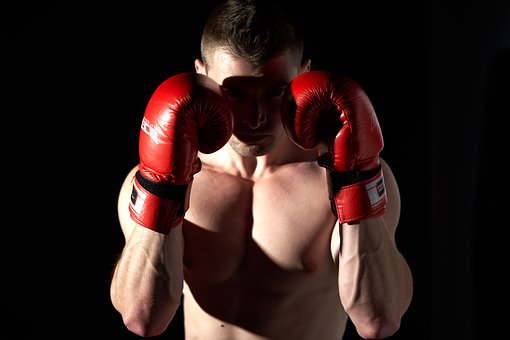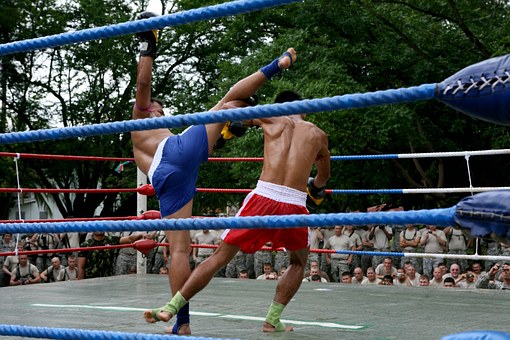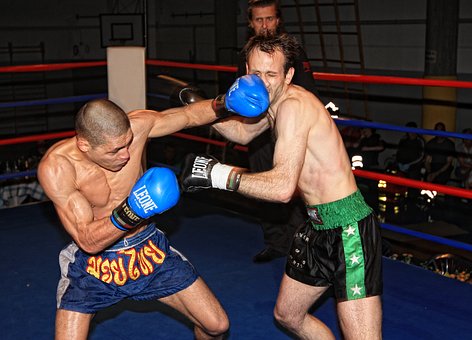Dutch Kickboxing vs Muay Thai which is the best?
Both Thai Boxing (Muay Thai) and Dutch style Kickboxing are incredibly powerful striking styles but the rule set and traditions as well as history of the development of the two styles has lead to the differences in the expression of the art of striking.
So what are the main differences between Dutch kickboxing vs Muay Thai and which one is more effective?
In this post we will take a look at the aspects of i) Difference in Techniques ii) Difference in Stance iii) Difference in Rules iv) Difference in Training between Dutch VS Thai boxing.
Differences in Techniques between Dutch Kickboxing vs Muay Thai
Dutch style kickboxing is well known for fast and aggressive punching combined with kicks and knees. The emphasis in Dutch style is on heavy hands based on Western boxing to set up heavy low kicks and knees.
Muay Thai is more traditional in the use of all eight limbs with a much heavier emphasis on the clinching aspect which allows for the execution of dumps, sweeps, knees and elbows.
In terms of history, Muay thai is grounded in ancient fighting arts of Asia such as Kun Khmer from Cambodia and Lethwei from Myanmar which were based on military fighting and ancient wars between the old Kingdoms.
Dutch kickboxing has its roots in Japanese kickboxing and Karate especially Kyokushin style.
In the Netherlands kickboxing was introduced in its Japanese form and the Dutch Kickboxing Association was founded in 1976.
Many Dutch kickboxers have gained international success and recognition such as Nieky Holzkien, Alistair Overeem, Ernesto Hoost and of course the great Ramon Dekkers who had great success fighting in Thailand and exhibiting the Dutch style.
Dutch kickboxing vs Muay Thai Stance
In an earlier post you can access, I have discussed in depth the traditional muay thai stance and distinct aspects that make the muay thai stance instantly recognizable.
The Dutch kickboxing stance also is unique in its own way and in the weapons that are favored.
Some of the distinct aspects of the muay thai stance that make it different from other striking styles are:
- Back rounded or slightly hunched – this is favored in muay thai to be able to defend against the clinch and making it harder for your opponent to clinch you.
- Elbows slightly flared out – again this is used for defending the clinch as well as making blocking and checking body and head kicks more efficient
- Hips square to opponent – unlike other striking arts that have a more ‘bladed’ side on stance the muay thai square stance is more efficient for defending and attacking on both sides of your body.
The Dutch kickboxing stance tends to favor a more side on stance in comparison to the muay thai stance. This helps to reduce your expose to attacks by making a smaller target for your opponent to attack.
However it is not as side on as the traditional Western boxing stance but definitely not as square as the muay thai stance.
It is a hybrid of the two stances. Dutch kickboxing stance and the muay thai stance.
In terms of hands the Dutch kickboxing stance prefers elbows glued to the body to defend against body punches and kicks with the hands and arms.

Muay thai prefers to defend by blocking and checking kicks with the shins. Using the arms to block punches allows for Dutch kickboxers to be able to counter against kicks with heavy punches.
In terms of the old strategy of “taking a shot to give one”, Dutch boxers can effectively block kicks with both arms while rotating the body to launch heavy punches in a quick powerful counter attack.
Differences in Rules Dictate the Favored Techniques
In K-1 and Glory kickboxing events (some of the most popular kickboxing events worldwide) elbows are forbidden and the clinch aspect is very limited.
Also sweeps and dumps are not favored and do not score nearly as highly as in traditional muay thai.

Due to this form of rules in international kickboxing competition, the favored techniques by Dutch kickboxers really come to the fore and are allowed to shine.
For spectators also it can be more exciting to see heavy punches and kicks traded in comparison to the clinch fight in muay thai.
In fact in terms of K-1, out of the 19 K-1 World Grand Prix championship titles won between 1993 and 2012, 15 were won by Dutch kickboxers.
Overall Muay Thai fights will score more highly with kicks, knees and elbows and dominance in clinching, kickboxing competitions often severely limit clinching and are scored more on powerful combinations, aggression and overall damage.
Difference in Training
Dutch style training places emphasis on partner drills with a focus on building powerful punch combinations often ending with a heavy low kick. This style of training is excellent for developing timing and distance and is favored by most MMA striking trainers.
In traditional muay thai the thai pads and clinching are much more prominent. In fact Dutch style drills are rarely ever used in traditional Thai gyms.
One great aspect of Dutch drills is that both partners can get in a lot of reps in developing their combos, while in muay thai the trainer or partner holding the pads is not able to get in the same amount of work.
This really helps Dutch kickboxers develop their power and stamina through repetitive drilling.
Which is Better? Dutch or Thai Boxing?
The answer to the question of which style is better really depends on the person learning and what their goals are. Both styles are incredibly powerful and effective striking arts.
If you are someone competing or looking to compete on the biggest kickboxing stages such as Glory, ONE Championship and K-1 than practicing Dutch style would serve you better.
Of course in competing in muay thai world championships or promotions such as Lion Fight then the traditional Thai boxing style would be where you would spend most of time training in.
But what about MMA?
I think training both styles and being proficient in both would be the best approach to take in terms of transferring across to MMA. The elbows and knees as well as sweeps and takedowns are applicable in MMA.
Also the Dutch style punches (especially with smaller MMA gloves) and aggression and evasive movement in comparison to muay thai would also serve well in MMA.
Dutch Kickboxing VS Muay Thai – Final Thoughts
This post has looked at the difference in technique between Dutch vs Thai boxing and how these differences are related to rule sets which dictate techniques favored as well as the differences in training approaches and drilling.
The differences in the fundamental stance have also been highlighted in this post.
In terms of which is more effective or which you should train more, this depends on the competition rules the practitioner wishes to compete in.
However in terms of developing into a well rounded martial artist having a good understanding of both is crucial and keeps your training fresh and fun by adding in different training styles which will keep you motivated to learn for a long time.
In terms of MMA, both styles have their unique aspects which translate well into MMA and again an understanding of both styles would serve an MMA practitioner well to have a great well rounded striking game.



